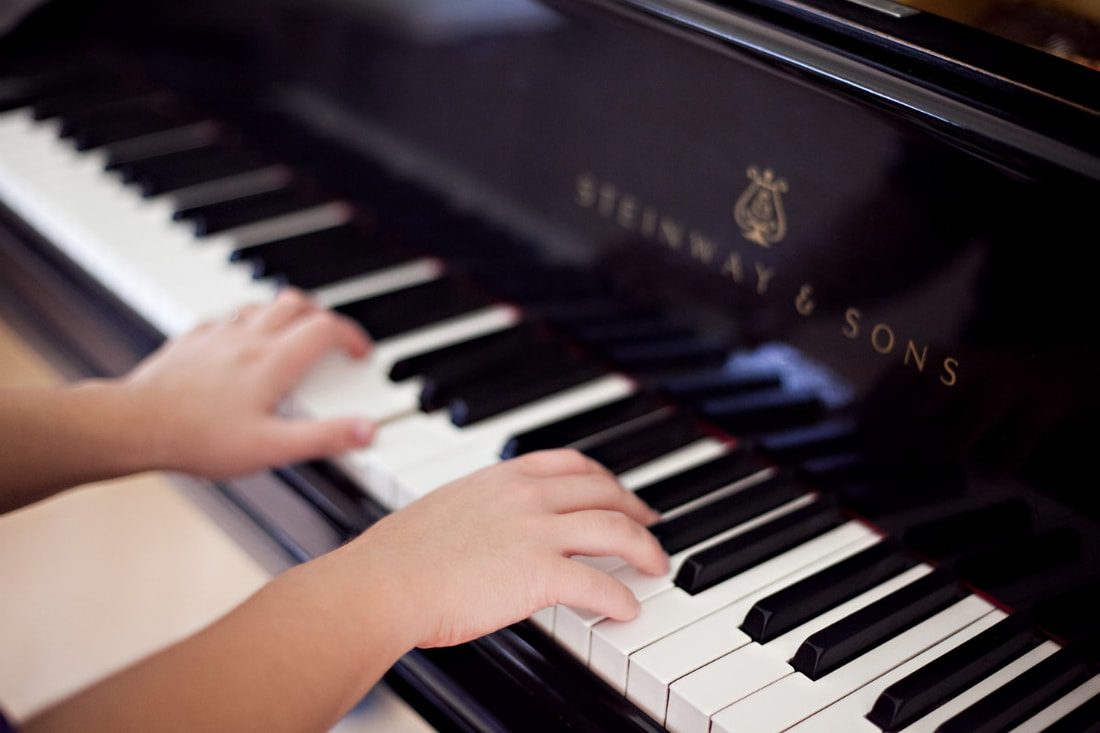
Being asked this question many times by my piano students, I've decided to write about the importance of the basics of piano playing.
Posture
First of all having the correct posture helps the player eliminating stress and tension and therefore this leads to successfully producing a continuous circle of power and flow during the practise. It also helps to develop a sensitive and controlled touch.
1. Your piano teacher or piano dealer can help you to choose a suitable piano bench which is worth investing money into considering the amount of hours you or your child will spend sitting on it.
2. Make sure your feet are placed stable on the ground, avoiding unstable feet as much as possible. Prevent your child's feet hanging down from the stool by putting a little foot bench in place until the student is old enough to touch the ground with both heels.
3. In order to achieve the most comfortable yet efficient position, the knees should be placed slightly under the keyboard.
4. When sitting down on the piano bench, make sure to sit on the front half of the bench. You do not need the whole bench or stool under your bottom and it's important that your main body weight should always be transferred to your feet.
5. The back should be straightened!
6. The elbows are held slightly higher than the keyboard. The distance between the elbows and the body should be at least one fist.
7. Shoulders should always be loose, never raised. Raised shoulders indicate tension, it is a common problem piano teachers generally fight against. Usually it comes from a difficulty you may experience in your piano piece. Remind yourself every few minutes to lower your shoulders again!
8. Keep your neck long and imagine your head being held from above, just like a marionette.
9. The wrist should be loose and flexible and there shouldn't be a bend in your wrist between your arm and fingers. Only a flexible wrist guarantees a relaxed, gentle touch to make a beautiful piano sound.
10. The palms should be curved similar to holding an apple. A good idea to get the right feeling for the correct posture is to take a tennis ball with a full hand, open the fingers to let it go and to try catching it quickly from above with a strong grip. That also helps to develop a good technique for chords
11. Last but not least: Don't forget to breathe! Especially when playing a challenging piece and being focused. Always remember to take a deep breath to let the oxygen flow in your body and fuel it up with new energy.
I hope this article is useful for our piano and keyboard students but whatever you play, drums, guitar, violin, cello, flute or any other musical instrument, relaxation and good breathing techniques are the key to develop a better performance.
Posture
First of all having the correct posture helps the player eliminating stress and tension and therefore this leads to successfully producing a continuous circle of power and flow during the practise. It also helps to develop a sensitive and controlled touch.
1. Your piano teacher or piano dealer can help you to choose a suitable piano bench which is worth investing money into considering the amount of hours you or your child will spend sitting on it.
2. Make sure your feet are placed stable on the ground, avoiding unstable feet as much as possible. Prevent your child's feet hanging down from the stool by putting a little foot bench in place until the student is old enough to touch the ground with both heels.
3. In order to achieve the most comfortable yet efficient position, the knees should be placed slightly under the keyboard.
4. When sitting down on the piano bench, make sure to sit on the front half of the bench. You do not need the whole bench or stool under your bottom and it's important that your main body weight should always be transferred to your feet.
5. The back should be straightened!
6. The elbows are held slightly higher than the keyboard. The distance between the elbows and the body should be at least one fist.
7. Shoulders should always be loose, never raised. Raised shoulders indicate tension, it is a common problem piano teachers generally fight against. Usually it comes from a difficulty you may experience in your piano piece. Remind yourself every few minutes to lower your shoulders again!
8. Keep your neck long and imagine your head being held from above, just like a marionette.
9. The wrist should be loose and flexible and there shouldn't be a bend in your wrist between your arm and fingers. Only a flexible wrist guarantees a relaxed, gentle touch to make a beautiful piano sound.
10. The palms should be curved similar to holding an apple. A good idea to get the right feeling for the correct posture is to take a tennis ball with a full hand, open the fingers to let it go and to try catching it quickly from above with a strong grip. That also helps to develop a good technique for chords
11. Last but not least: Don't forget to breathe! Especially when playing a challenging piece and being focused. Always remember to take a deep breath to let the oxygen flow in your body and fuel it up with new energy.
I hope this article is useful for our piano and keyboard students but whatever you play, drums, guitar, violin, cello, flute or any other musical instrument, relaxation and good breathing techniques are the key to develop a better performance.

 RSS Feed
RSS Feed